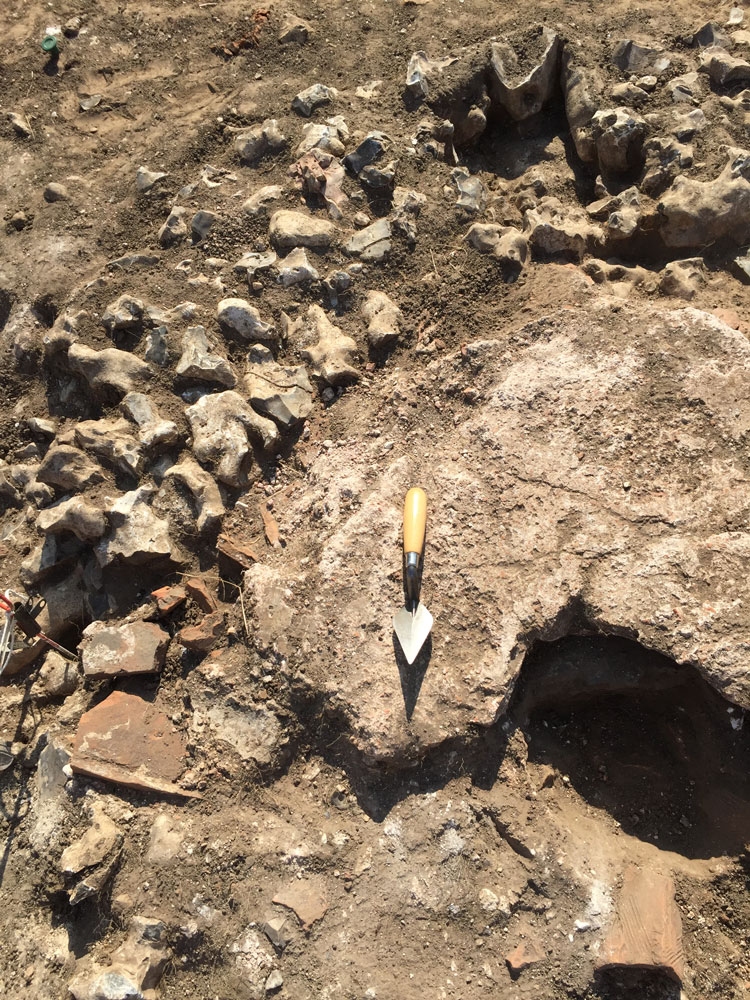Sally and the Team write: At the Pavilion the finds processing team lead by Kate, Monica and Paul has continued with the huge task of washing and sorting the finds and have helped enormously in educating us on what we are finding. These have been wonderfully sunny days, and very hot for September, with record-breaking temperatures here in east Kent. This has helped with drying the finds after they have been washed. Here are some photos of the trays of finds as they come in from the Trenches.
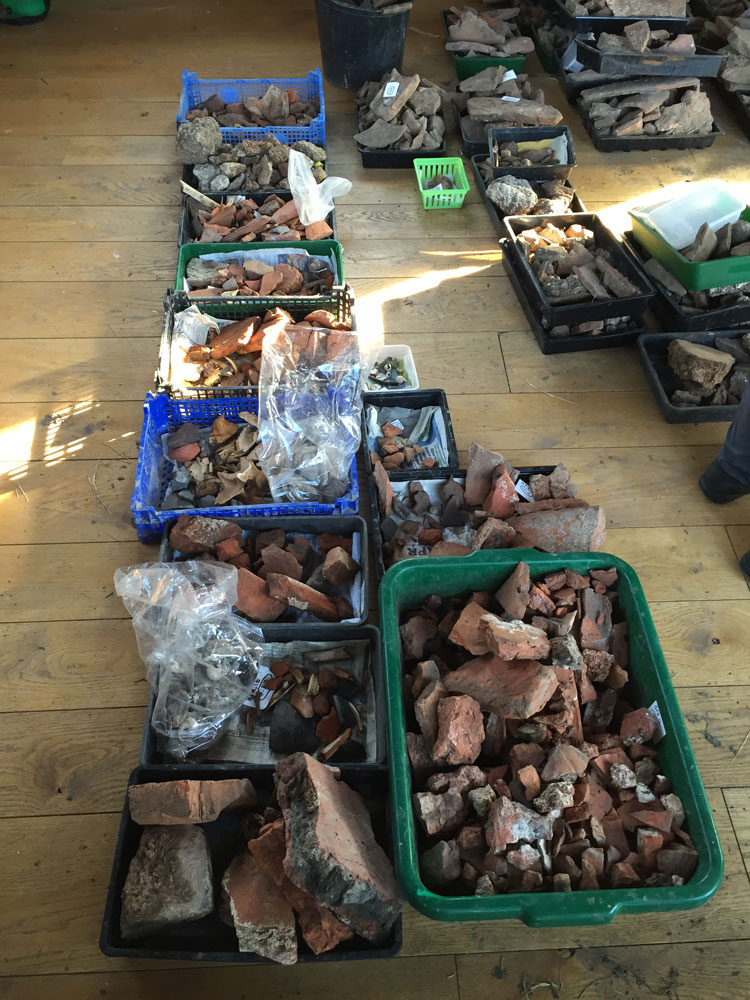
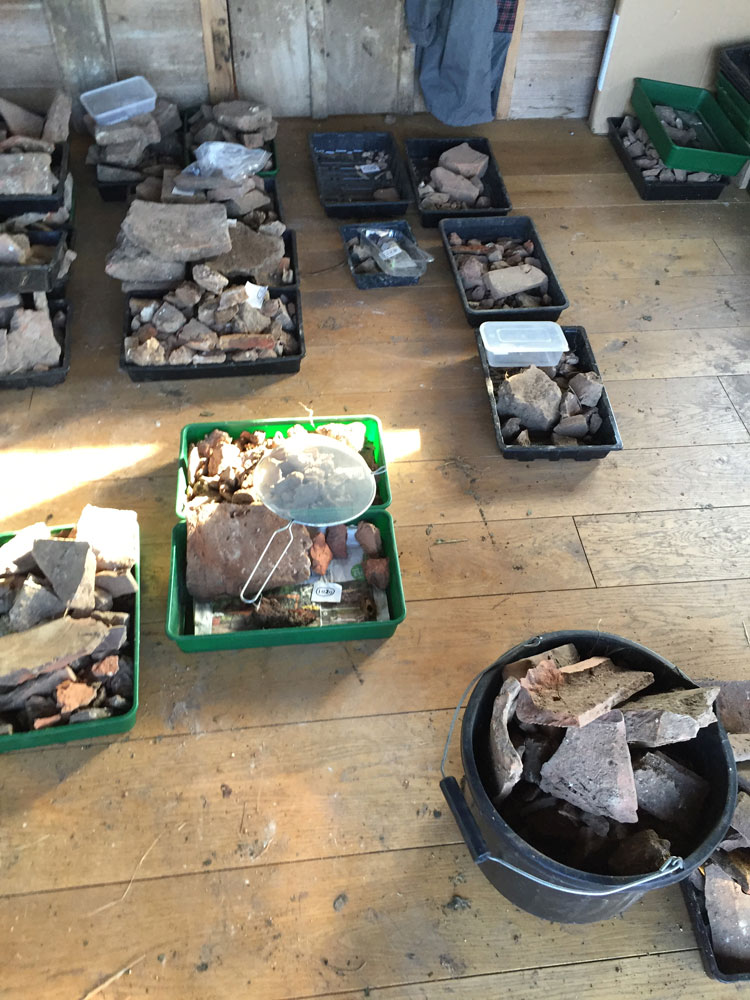
There is a supply of fresh water right next to the pavilion, which we use to fill the finds washing bowls, its function usually being to fill the drinking trough for the sheep. The pavilion’s north-facing decking is cool to sit on for finds-washing, as well as for snack and meal breaks. The location is free from disturbances, except for the occasional flock of animated geese.
At Trench A Gavin, Lloyd and Jonathan have emptied a large area of the main hypocaust chamber; the excavation is really revealing a lot more about the site as we examine the stratified ancient layers.
Sally writes: During washing of the finds two box flue tile fragments came to light from context 1010 showing keying patterns different to those named from contexts 1003 and 1005 (i.e. which included roller-stamp design and impressed).
The names that come to my mind for these new keying patterns are ‘Saltire’ and ‘Aztec’.
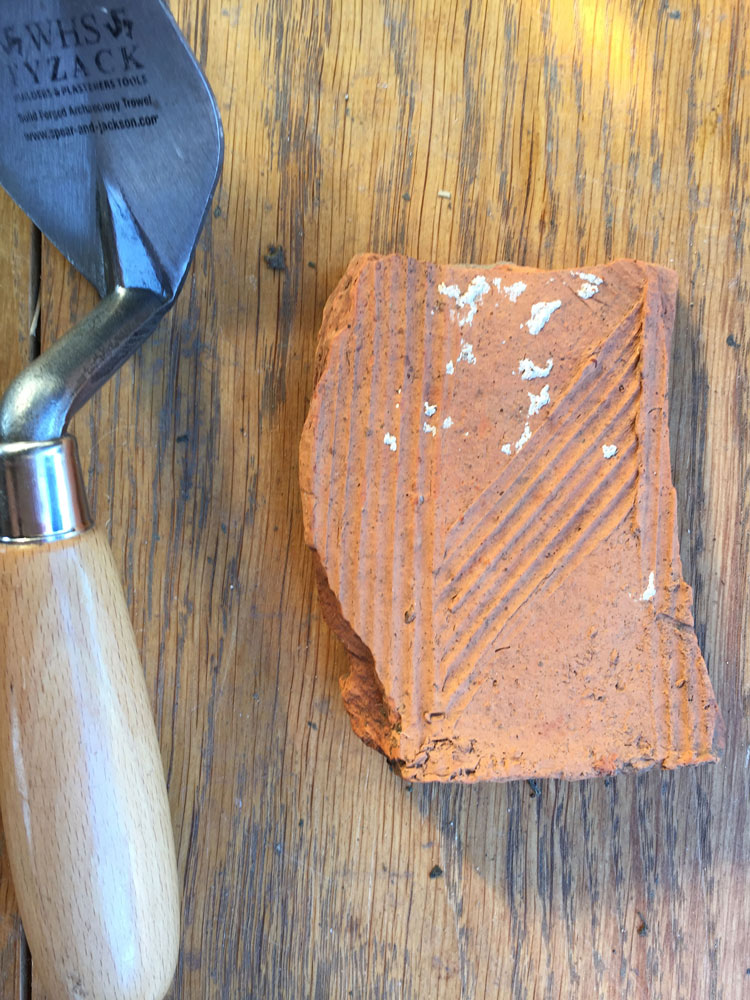
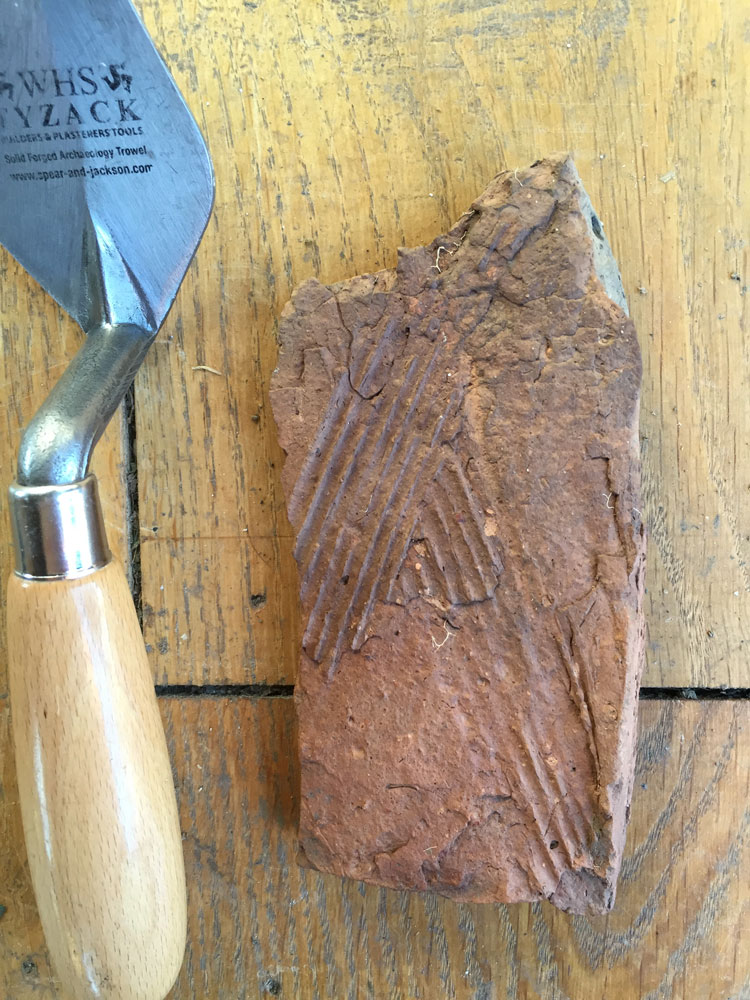

Closer views of the apsidal feature showing the flatness of the opus signinum, where floor tiles had once sat:
